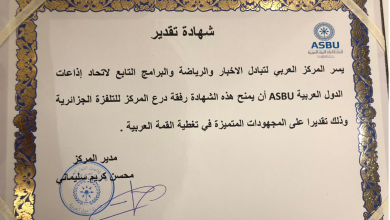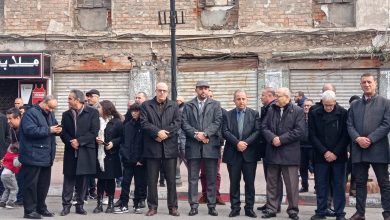
Memory Channel organized today, Sunday, a historic symposium entitled “The First Maghreb Symposium on the March and Struggle of Abd al-Krim Al-Khattabi.”
The symposium was attended by the advisor to the President of the Republic in charge of memory and the National Archives, Abdelmadjid Chikhi, members of the National Secretariat of the Mujahideen Organization, as well as executives and doctors in history and political science.
This symposium was organized to talk about the leader of the revolution, the lion of the countryside, Abd al-Krim Al Khattabi, and his struggle against French and Spanish colonialism and the defeat of colonialism after he managed to unite the rural population and direct the compass towards the real enemy.
For reference, Muhammad ibn Abd al-Karim al-Khattabi was born in Ajdir, and he belongs to the tribe of Bani and Raaghel, and his father, Abd al-Krim al-Khattabi, was the judge of the tribe. Muhammad received his first education represented in memorizing the Qur’an and religious teachings in Ajdir, before moving to study in the city of Tetouan and then the Attarine School in Fez. He was assigned by his father to a political mission to Sultan Abdelaziz in 1908, in which he expressed the support of Bani and Raigel to fight Jilali bin Idris Zerhouni Bouhamra, who threatened the unity of the Moroccan entity before the colonial period at the behest of French and Spanish colonial ambitions in Morocco, in a difficult political circumstance in Morocco’s history.
He proceeded to mobilize the tribes in the markets and mosques, and to gather two hundred rural fighters to besiege the point of Tafrost, in the year 1920, while Muhand and his brother Muhammad remained in Ajdir to organize and prepare the imminent revolution. The father died after the siege of the point 22 days, leaving the leadership to Muhammad al-Tahan.
Muhammad ibn Abd al-Krim attacked the incursion point, accompanied by 300 fighters, in a surprising way, and the attack resulted in the killing of half of the Spanish military garrison, in addition to the seizing of artillery pieces and other war equipment by the rural people. The Spanish historian Ricardo de la Cerba considers that this battle was the first decisive defeat of the Spanish army in the countryside, and contributed to undermining the morale of the Spaniards, especially Silvestri, who went down in history “as the first Spanish general to lose his cannons in Africa.” Immediately after this victory, the rural tribes flocked to the rebel command center in Tasman, and Abd al-Krim’s army rose to 1,000 fighters, most of whom were from Bani, Ryagel and Bani Touzin. He achieved a second victory in Sidi Beban (northwest of Anwal), in which the Spaniards lost 314 soldiers.
He established the Republic of the Rif (the Federal Republic of the Rif Tribes) on September 18, 1921, a modern republic with a constitution and parliament when the people of the Rif region (northern Morocco) revolted against Spain and declared their independence from the Spanish protectorate over Morocco.
The capital of the republic was Ajdir, its currency was Rifan, its national holiday is its independence day (September 18), its population is estimated at 18,350 people. It was announced by Muhammad Abd al-Krim al-Khattabi, Prince of the countryside. The republic was formally formed on February 1, 1923. Al-Khattabi was the head of state and prime minister. Initially, Hadj al-Hatami was appointed prime minister from July 1923 until May 27, 1926. The republic was dissolved on May 27, 1926, with a Franco-Spanish force of 500,000 fighters and extensive use of chemical weapons.
Muhammad ibn Abd el-Krim al-Khattabi called for the independence of all of Morocco from the Spanish and French protection, and, starting from Cairo and through Radio Sawt al-Arab al-Nasiri, supported the liberation movements in Algeria, Tunisia, Libya, and the rest of the Arab and Islamic countries, until he died in Cairo, Egypt, in February 6, 1963, that is, after the liberation and independence of Morocco from the Spanish and French protection, and he is still considered a national hero in Morocco and as one of the symbols of liberation in the countries of the south as a whole. He was buried in the Martyrs Cemetery in Cairo.








